Recent Water Damage Posts
The Hidden Dangers of Water Damage and Why Immediate Action Matters
3/11/2025 (Permalink)
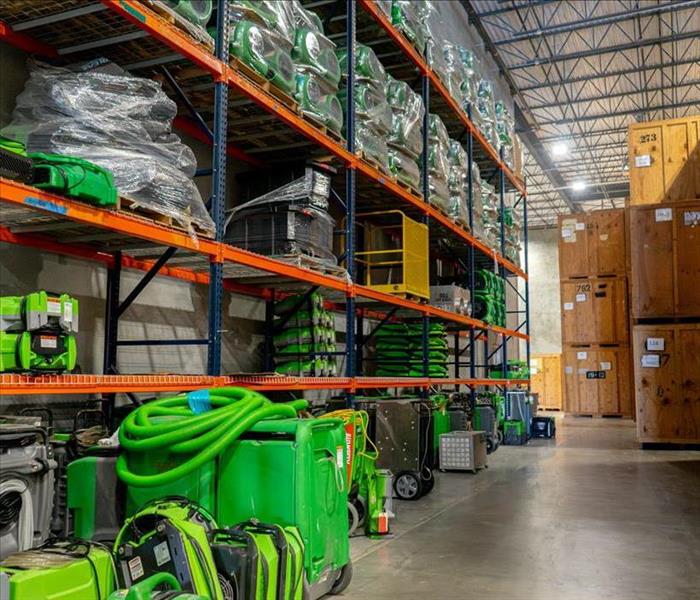 Equipment warehouse located in Greater Houston
Equipment warehouse located in Greater Houston
Water damage is one of the most common disasters that homeowners and businesses face. Whether caused by a burst pipe, severe weather, or a hidden plumbing leak, even a small amount of water can lead to significant damage if not addressed quickly. SERVPRO® of Baytown/Channelview specializes in professional water damage restoration, ensuring that properties are properly dried and restored to prevent further issues.
How Water Damage Affects Your Property
Water damage isn’t always immediately visible, but it can lead to serious long-term problems, including:
- Structural Damage: Water can weaken drywall, flooring, and even the foundation of a building if left unchecked.
- Mold Growth: Excess moisture creates the perfect environment for mold, which can spread in as little as 24 to 48 hours.
- Electrical Hazards: Water intrusion near electrical wiring or outlets can create fire risks and power failures.
- Damage to Personal Belongings: Furniture, documents, and electronics can all be permanently damaged by prolonged exposure to moisture.
What to Do When Water Damage Occurs
- Shut Off the Water Source – If the damage is due to a plumbing issue, turn off the main water supply to prevent further flooding.
- Turn Off Electricity in Affected Areas – Water and electricity are a dangerous combination. If water is near electrical outlets or appliances, turn off the power to that area.
- Remove Excess Water if Safe to Do So – Use towels, mops, or a wet/dry vacuum to remove standing water, but avoid contact with contaminated water.
- Document the Damage – Take photos and make a list of damaged items for your insurance claim.
- Call SERVPRO® of Baytown/Channelview for Professional Restoration – Our team responds quickly to extract water, dry affected areas, and restore your property to its pre-damage condition.
Why Choose SERVPRO® of Baytown/Channelview?
- 24/7 Emergency Service – Water damage can worsen quickly, so we respond immediately to mitigate further issues.
- Advanced Drying and Moisture Detection Equipment – We use state-of-the-art tools to ensure all moisture is removed, even in hard-to-reach areas.
- Comprehensive Restoration – From water removal to repairs, we handle every step of the restoration process.
- Insurance Coordination – We work directly with your insurance company to make the claims process easier for you.
Water damage should never be ignored. If your home or business has been affected, contact SERVPRO® of Baytown/Channelview for expert water damage restoration services.
How Baytown's Humidity Increases Risks of Water Damage and Mold Growth
10/18/2023 (Permalink)
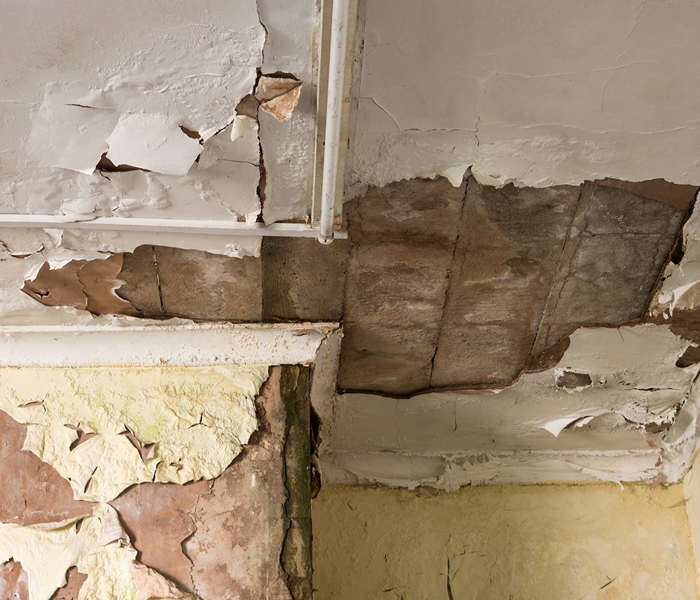 When humidity is high, water damage may be present. Call the professionals for quick response to safeguard your home or business.
When humidity is high, water damage may be present. Call the professionals for quick response to safeguard your home or business.
Texas, with its warm and humid climate, is no stranger to the challenges of water damage and mold growth. Understanding the connection between humidity and these issues is crucial for homeowners. In this blog, we'll explore how humidity levels can affect water damage and contribute to mold growth in Baytown, as well as strategies to mitigate these problems effectively.
The Role of Humidity in Water Damage
Baytown's high humidity levels can exacerbate water damage issues. Moisture from the air can prolong the drying process, making it harder to completely remove moisture from affected areas. This can lead to structural damage and the onset of mold growth.
Immediate Water Removal
In a humid environment, it's essential to act swiftly when water damage occurs. Promptly removing standing water and drying affected areas can prevent prolonged exposure to high humidity, reducing the risk of further damage.
Dehumidification
Utilizing dehumidifiers is an effective way to control indoor humidity levels. They can help maintain optimal moisture levels, making it less conducive for mold to thrive in your home.
Proper Ventilation
Good ventilation is key to managing humidity. Ensure that your home is adequately ventilated to allow moisture to escape. Use exhaust fans in areas prone to moisture, such as bathrooms and kitchens.
Sealing Leaks
Address any leaks in your home promptly. Leaks not only introduce moisture but also increase humidity levels. Fixing leaks can help maintain a drier indoor environment.
Regular Maintenance
Regularly maintaining your HVAC system can prevent moisture buildup. Clean or replace filters as needed to ensure efficient moisture control.
Monitoring Humidity Levels
Invest in a hygrometer to monitor indoor humidity levels. Keep them between 30% and 50% to create an environment less conducive to mold growth.
Mold Prevention
To prevent mold growth, address water damage immediately and thoroughly. Mold can begin to develop within 24-48 hours after water damage occurs.
Professional Mold Remediation
If you suspect mold growth or encounter a mold problem in Baytown, seek professional mold remediation services like SERVPRO®. They have the expertise and equipment to safely remove mold and prevent its return.
In Baytown, TX, where humidity is a constant factor, understanding the impact of humidity on water damage and mold growth is essential for homeowners. By taking proactive measures to control indoor humidity levels, promptly addressing water damage, and seeking professional help when needed, you can protect your home from the devastating effects of mold and ensure a healthier living environment for you and your family. For expert assistance with water damage restoration and mold remediation in Baytown, contact SERVPRO® today. We're here to help you safeguard your home.
Water Damage Tips: Essential Steps to Minimize the Impact of Water Intrusion
8/10/2023 (Permalink)
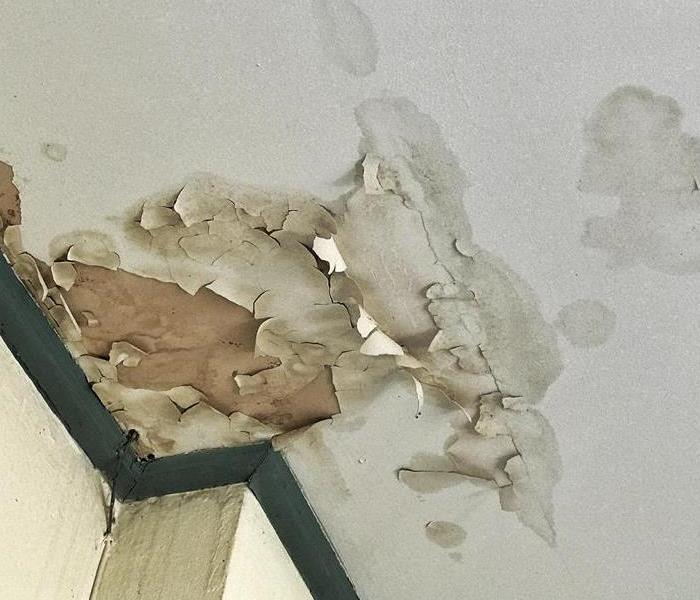 Water damage can be a challenging and stressful experience.
Water damage can be a challenging and stressful experience.
Water damage can strike unexpectedly and wreak havoc on your property, leading to costly repairs and damages. Whether caused by a burst pipe, flooding, or a leaky roof, taking immediate action is crucial to minimize the impact of water intrusion. In this blog, we will provide you with essential tips to help you handle water damage effectively and mitigate further harm to your home or business. By following these steps, you can navigate through this challenging situation with confidence and protect your property.
Prioritize Safety
Before entering a water-damaged area, ensure that it is safe to do so. Turn off the electricity to affected areas, especially if water levels are high or if electrical outlets or appliances are submerged. If necessary, seek professional assistance to safely assess and mitigate potential hazards.
Stop the Water Source
If the water damage is caused by a plumbing issue, such as a burst pipe or overflowing appliance, locate and shut off the main water supply to stop the flow of water. This immediate action will help prevent further damage and flooding.
Document the Damage
Take photos or videos of the water damage and affected areas as evidence for insurance claims. This documentation will assist in the assessment and compensation process. Make a detailed list of damaged items and their approximate value.
Remove Excess Water
Using mops, towels, or a wet/dry vacuum, remove as much standing water as possible. Promptly drying the affected area will help prevent the growth of mold and further structural damage. Open windows and use fans or dehumidifiers to enhance air circulation and aid in the drying process.
Salvage Valuables
If items are salvageable and not excessively damaged, remove them from the affected area and place them in a dry and well-ventilated space. Take immediate action to dry out important documents, electronics, and sentimental items.
Assess and Mitigate Mold Growth
Mold can start growing within 24-48 hours after water intrusion. Inspect the affected area for signs of mold growth and address it promptly. Remove any wet materials, such as carpets, furniture, or drywall, that cannot be adequately dried or cleaned. Consult with professionals if extensive mold remediation is required.
Contact Your Insurance Provider
Notify your insurance provider about the water damage as soon as possible. Familiarize yourself with your insurance policy coverage and follow their instructions regarding documentation, assessments, and repairs. Keep all receipts related to mitigation and restoration efforts.
Prevent Future Water Damage
Take preventative measures to reduce the risk of future water damage. Regularly inspect and maintain your plumbing system, roof, and gutters. Install water leak detection devices and consider adding flood-resistant barriers or sump pumps in flood-prone areas.
Consult with Restoration Specialists
If the water damage is extensive or if you are unsure of the best course of action, consult with water damage restoration specialists. They can provide expert guidance, comprehensive assessments, and professional services to restore your property to its pre-damaged condition.
Water damage can be a challenging and stressful experience, but by following these essential tips, you can minimize the impact and protect your property. Acting swiftly and effectively in response to water damage can make a significant difference in mitigating further harm and restoring your property to its previous state.
What Is Secondary Water Damage?
3/15/2023 (Permalink)
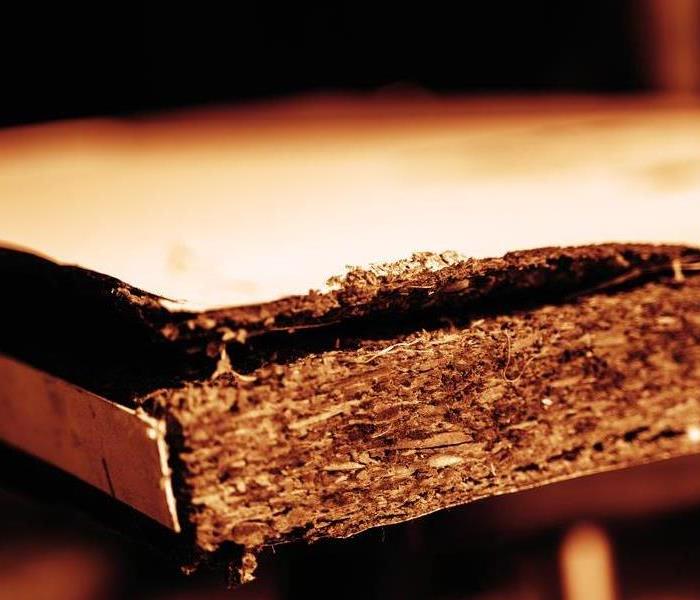 Secondary damages to water can leave your home in a mess.
Secondary damages to water can leave your home in a mess.
Secondary water damage is very common. It can also be very costly. With secondary water damage, the initial flooding or leak has already occurred and the moisture has been present for an extended period of time. Secondary water damage occurs when there is a large amount of moisture left behind after the initial problem is taken care of.
What is Secondary Water Damage?
Secondary water damage is a form of structural decay that occurs when you don't immediately deal with the source of your primary water damage. It can be caused by any number of things, but it's most often the result of prolonged exposure to moisture.
Secondary water damage is preventable--it doesn't have to happen!
Mold Infestation
Mold grows everywhere, and it will grow on any surface. Mold spores are present in the air all around us, and when they come into contact with a damp or wet surface--like wood, drywall, or carpeting--they begin to grow. In as little as 48 hours after water damage occurs, mold can begin to appear on your walls and floors if you don't take action immediately!
If you have prolonged exposure to water damage from flooding or leaks from pipes bursting, then you may experience secondary damage in the form of a mold infestation.
Flooring Damage
Another common form of secondary water damage is flooring damage. This occurs when the flooring has been exposed to water for an extended period of time, which can cause it to buckle or warp. If you have a home with hardwood floors and you notice that they are buckling, warping, or cracking in any way, this could be a sign that there was some sort of leak somewhere in the home. It's important that you get any potential issues checked out as soon as possible so that they don't get worse over time--and potentially affect other areas of your house later on down the line!
Electrical Damage
Electrical damage is one of the most dangerous forms of secondary water damage. Electrical outlets, switches, and lights can be damaged by water that gets into them. This can cause fires or electrocution, which can lead to property damage and personal injury.
If you are dealing with electrical issues after a flood or other type of water damage has occurred in your home or business, it's important to contact an electrician right away so they can assess the situation and take the necessary steps toward fixing it.
Pipe Damage
Secondary water damage can occur to the pipes in your home as well. Prolonged water exposure can lead to extensive corrosion. When a pipe is corroded, it can cause leaks and eventually lead to further water damage.
Wood Rot
Wood rot is a type of secondary water damage that occurs when moisture from the ground or another source seeps into your home's foundation, walls, and floorboards. You may not know it at first, but over time this will cause wood to decay and break down. If left untreated it could lead to further structural damage in your home.
It's important to know the signs of secondary water damage. If you notice any of these signs in your home or business, contact a professional immediately. They will be able to help you identify the cause and get it repaired quickly so it doesn't cause further damage.
Important Steps To Take After Water Damage In Your Home or Business
12/9/2022 (Permalink)
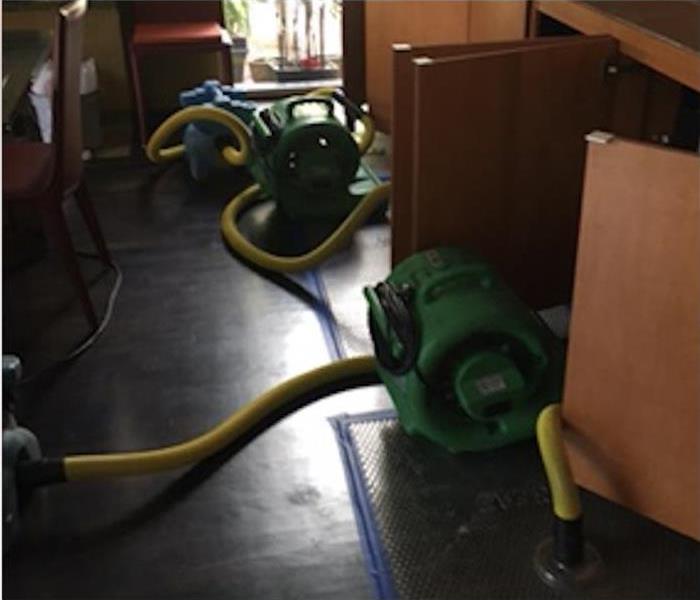 Water cleanup in Baytown, TX
Water cleanup in Baytown, TX
Water Damage in Your Home or Business
When you have a water damage event in your home or business, it can be one of the most stressful situations imaginable. It's important to take action quickly to minimize secondary damage and potential mold growth. Below are some steps to follow after a water damage event:
Find the Source of the Problem and Fix It
Once you have found the source of your water damage and fixed it, make sure that the problem doesn't happen again. You can take some preventative measures to ensure your home or business is protected from water-related damage.
- Install a backflow valve: If you have an appliance such as a washing machine or dishwasher installed in your basement, consider installing a backflow valve to protect it from flooding.
- Check drainage systems: Make sure all drains are functioning properly and that gutters are draining away from buildings rather than towards them.
Document Everything
Documenting your water damage is one of the most important steps you can take after experiencing a flood or other type of disaster. This step will help you with insurance claims, as well as make it easier for contractors to do their jobs properly.
Here are some tips:
- Take pictures of all affected areas (both before and after).
- Make a list of damaged items so that you can replace them individually without having to replace everything at once. This will also make claiming insurance easier in case there’s no coverage.
Clean Damaged Items
To remove any dirt or debris, wipe all parts of the damaged item with a clean cloth. Then, use a mild detergent and warm water to clean all surfaces of the item. Do not use bleach or abrasive cleaning agents on materials that are absorbent, such as wood flooring or upholstery.
Dry items in a warm, dry area. If possible, allow your items to air-dry for several days before attempting to move them back into their original location so they do not get wet again when you move them back into place! If this is not an option for you (maybe because you live in an apartment building), then set up fans around your cleaned area so that it is fully dried thoroughly before bringing it back to your home/business once again!
Dry Out Wet Materials
After you have dried out the area, remove any remaining water using a wet/dry vac or shop vacuum. This will ensure that mold and mildew do not grow in your home.
It is important to clean up any soaked items as quickly as possible to avoid mold growth. To prevent mold and mildew from growing on wet materials, keep the humidity level of your home below 50% for at least three days after the flood or leak occurred.
Call the Professionals
You need to call in the professionals immediately after water damage has occurred in your home or business. You need to have a certified IICRC (Institute of Cleaning and Restoration Certification) restoration company come out and assess the damage for you, as well as give you an idea of what it will take to make things right again. The sooner you act, the better chance you have at saving your property from further damage due to mold or other issues that can occur with prolonged exposure during this time period.
Contacting your insurance agent is another important step when dealing with water damage because it's likely that your insurance policy covers some form of protection against these types of situations happening due to natural disasters such as floods or other events outside our control - but not all policies do! If yours doesn't provide coverage then there's no harm done because they're free agents anyway; however if they do cover damages caused by floods then there's no reason why they shouldn't cover any other damages caused by them too (assuming there aren't any exclusions).
If you experience water damage in your Baytown, TX home, give SERVPRO of Baytown/Channelview a call!
How Can You Detect a Shower Leak?
11/9/2022 (Permalink)
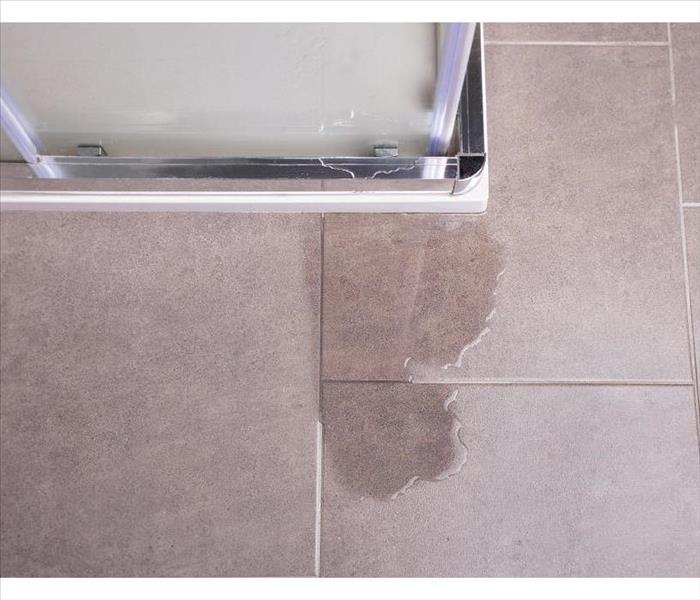 A shower pan inspection is something you should make time for.
A shower pan inspection is something you should make time for.
How To Detect a Leaky Shower?
If you notice signs of water leakage at your home, you should look for them right away. The first place to check is your shower pan and walls. Your shower is a critical part of your plumbing system, so it’s important that any problems are addressed immediately. In this article, we’ll discuss how to detect a leaky shower and stop the dripping before it becomes an even bigger issue in your home.
What is a Shower Pan?
A shower pan is a waterproof floor that sits below the surface of your bathroom and allows water to drain into it. It’s usually made of fiberglass or plastic, and it typically sits directly on top of a concrete slab or base.
A leak in your shower pan may be difficult to detect because it will appear as if the water is coming from inside the walls instead of outside them. This problem can also be caused by other issues in addition to leaks, such as defective plumbing or an overflow drain with too much sludge buildup in its trap seal.
Signs of Water Leakage
There are a variety of signs that your shower may be leaking:
Dark spots on the ceiling. If you see these discolored areas in your bathroom and they seem to be growing in size, it could be a sign that water is seeping through the walls or ceiling. The dark spots can also indicate mold growth from moisture building up in the walls above them.
Water stains on walls and ceilings. These can indicate hidden leaks above or around your shower-head, especially if they're near where water pipes run into or near the wall. They're not necessarily an immediate problem; however, if left untreated for too long they could lead to serious damage over time (like mold) as well as structural issues like cracked drywall or roof leaks due to improper ventilation at that location within your home's structure!
Mold and mildew buildup under tiling material such as vinyl flooring or grout between tiles due to dampness inside these materials (i.e., caused by standing pools of water). This may also cause discoloration which often looks like rust stains along with build-up behind mirrors where condensation occurs during use—especially if there isn't adequate ventilation provided by fans installed throughout each room while bathing takes place!
Inspecting the Shower Pan
If you have a leak in your shower pan, it's important to check the entire shower pan. Inspect this area for stains and puddles as well as any cracks or holes that may be causing leaks. The walls can also hold water, so look at their position carefully when inspecting the shower pan. Check the drain for any leaks or clogs that could harbor mold growth; if possible, remove it and clean it thoroughly before reinstalling it. Also check the caulking around where your faucet meets the wall—a small crack here can cause significant damage to your home as well as mold growth over time. Finally, check all of your pipes under each side of your head.
If you have noticed signs of water leakage at your home, you should look for the source right away. This is especially important if you live in an area where it rains often or has a lot of humidity. Water damage from leaks can be from leaks in the shower pan itself, where the shower enclosure meets the wall; leaks above it in the ceiling; or even around windows and doors (especially if they’re made out of wood).
Make sure you take the time to inspect your shower pan. If there is a problem with it, then you should fix it right away. You can do this yourself or hire an expert to help. When taking action to repair the leak, make sure that they are properly licensed and insured so they can legally do this work on your home without any issues arising from their work being done improperly.
If you have a leak in your home and need someone to come and mitigate the water then restore your property, give SERVPRO of Baytown/Channelview a call! We will have your Channelview, TX home back to normal as quickly as possible!
The Benefits of Business Insurance
6/28/2022 (Permalink)
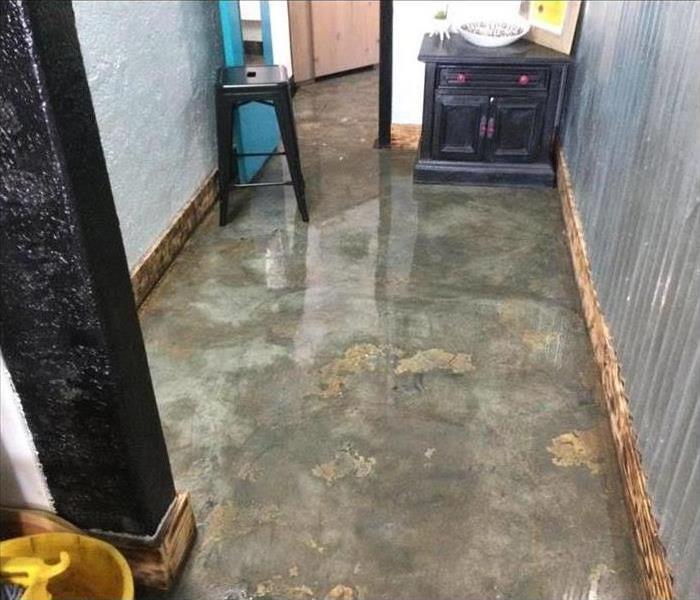 Water damage in a building in Liberty, TX.
Water damage in a building in Liberty, TX.
The Benefits of Business Insurance
When creating a business plan, it is important to take into account all of the risks that your business might face. Business insurance is a broad term that refers to any policy that is designed to protect your business from risks that are common in your industry.
Common risks include lawsuits, vandalism, damage to property, employee injuries, and loss of income over an extended period of time.
Business insurance plans come in different types, such as workers' compensation, liability, auto, and property. Here are some of the main benefits of business insurance.
1. Protect Physical Property From Water Damage and Other Events
Most businesses rely on physical locations to perform critical business operations. If your building has broken pipes, water could seep through the walls and floors to create a dangerous situation for your building and the property it contains. If water damage is not dealt with quickly, you could lose expensive equipment and important documents.
However, a commercial property insurance plan can help you manage these kinds of situations. Commercial property policies cover expenses associated with water damage from leaks in your building. If you experience a water incident, you can contact a water cleanup and restoration company in Liberty, TX, that will help you recover from the event. Cleanup services are often covered under these policies.
2. Protect Financial Assets
If your business experiences any of the common hazards in your industry, you may need to cease operations temporarily or allocate funds to deal with the problem. If you have insurance that covers the event, you will be able to soften the financial blow and get your business back on track as quickly as possible. Make sure to communicate often and clearly with your insurance provider to ensure a smooth claims process.
Business insurance is a crucial part of any responsible business plan. Having good insurance will help you protect your business's future.
Understand the 3 Categories of Water Damage
5/22/2022 (Permalink)
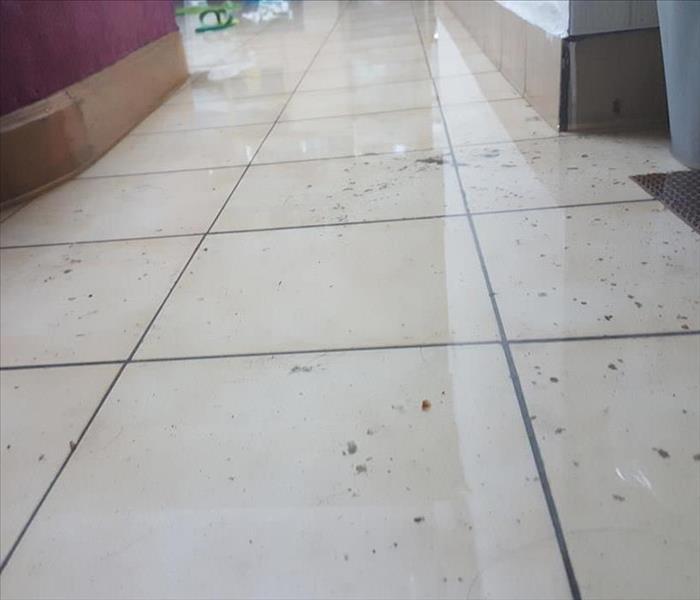 Sewage backup in a home in Lynchburg, TX.
Sewage backup in a home in Lynchburg, TX.
Three Types Of Water You May Encounter After a Flood
All flood water is not created equal. Some types are more hazardous than others. If you experience flooding at your Lynchburg, TX, home, it's important to know what type of H2O you've got on your hands. In fact, if you're dealing with contaminated water, you don't want that on your hands, period. Here's a quick overview of the three types of water you may encounter after a flood.
Category 3: Black Water
This is the gnarliest water of the bunch. Its nickname has little to do with its hue, and everything to do with the number of pathogens and toxins it contains.
Spoiler alert: It's a lot, so this type of water should always be handled by an experienced water damage mitigation company. The most common sources of this Category 3 water are:
- Sewage backup
- Broken sewage lines
- Flash floods
- Overflowing rivers and streams
- Hurricane-related floods
Category 2: Significantly Contaminated Water
This middle category of water, sometimes known as greywater, is also contaminated, though not as severely as Category 3. Still, it's dirty water cleanup that you'd be wise to leave to professionals.
Common sources of Category 2 water are:
- Dishwashers
- Washing machines
- Aquariums
- Overflowing toilets (urine-only)
- Sump pump failure
- Seepage is related to a loss in hydrostatic pressure
Category 1: Sanitary Water
Water in this category contains negligible toxins, if any, which means it's safe for you to clean it up on your own if you're so inclined. The most common sources of this inside your Lynchburg, TX, home are toilet tanks and the water supply line. Rain and melting snow are also examples of Category 1 water.
After flooding in your home, the urge to dive into cleanup straightaway is understandable. In order to minimize damage, expedite the restoration process and tidy things up in the safest manner possible, it's important to recognize if you're dealing with contaminated water and make the smart call.
Prevent Water Damage While Vacationing
2/7/2022 (Permalink)
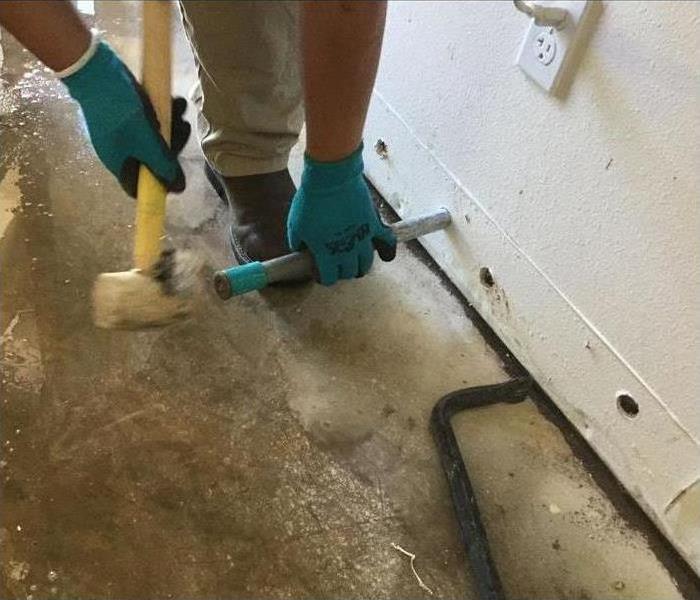 Standing water can cause real damage to your home.
Standing water can cause real damage to your home.
Prepare Your Homes Against Water Damage
When leaving Highlands, TX, for vacation, few people consider prepping their homes against water damage. You go through your checklist of turning off the coffee pot and stove and locking all the doors, but what happens if you have a leak and need a water pipe repair while you are away? A broken pipe can do a lot of damage, especially if it is left unattended for several days.
Prepping Your Home
Before leaving for an extended vacation, check your home for leaks. Examine the pipes under the sink and the water heater for any cracks or rust. Inspect the hoses that connect to any appliances. Insulated any exposed pipes if you are leaving in the winter. A pipe that burst due to freezing needs water pipe repair immediately. Ask a neighbor, friend or family member if they can check in on your home periodically. If no one can check on your home, turn off the main water and drain the pipes.
Preventing Floods
It is important to not only prep your home to prevent damage from a leak but also from a storm. Make sure your gutters are cleaned and water can flow freely through them. Check your sump pump. Clear out any debris you see. Test it by filling the sump pit and turning on the pump. Check your window seals and your roof for any leaks. All of these checks are especially important if any heavy rains or storms are expected in your area.
Returning from a vacation to find your house flooded can be devastating. Standing water can cause real damage to your home. A simple water pipe repair can escalate into a big problem if no one is there to address the issue. Take the time to prep your home against intruding water before you leave. That way you can enjoy your time away without worries.
Exploring the 3 Contaminated Water Types
1/30/2022 (Permalink)
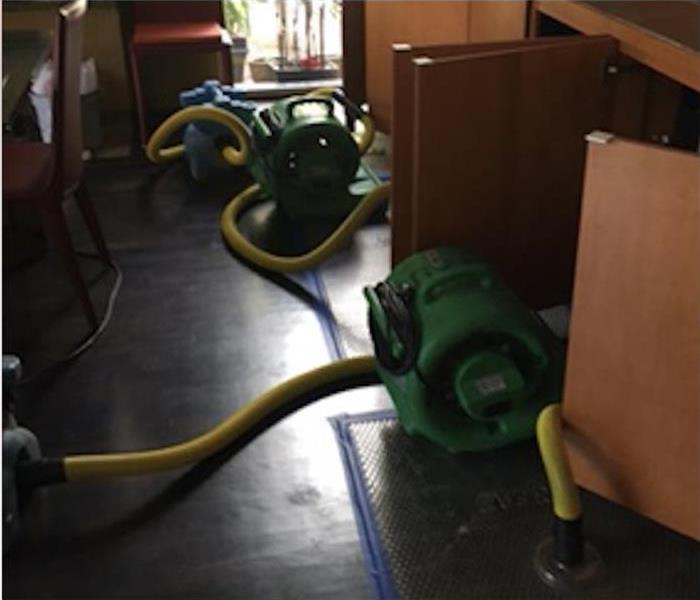 Water cleanup in Channelview, TX.
Water cleanup in Channelview, TX.
Exploring the Three Types of Contaminated Water
Contaminated water in Channelview, TX, is something that no one wants to deal with, but it happens, so you want to ensure that you are informed. This guide helps you to take the right steps to restore your home following a flood or bad water situation.
Clean Water
Also referred to as white water, this is a type that is considered to be clean and not harmful to people or your pets. The one exception to this rule would be if detergent got into the water. You may experience a flood of this water type due to situations, such as the following:
- Overflowing sink
- Toilet overflow or backup
- Damaged or broken water supply line
- Faucet damage or a severe leak
It is important to note that while this is initially considered to be harmless in most cases, it can progress to contamination within 48 hours, so prompt action to clean it up is often imperative.
Contaminated Water
This is a type of wastewater that may flow from your washing machine, dishwasher or bathroom fixtures. It usually does not hurt people or pets, but it can contain impurities that can pose a danger to them. Some of the impurities that may be present include cleaning agents, food residue and household chemicals. Within 48 hours, the associated mold and bacteria growth can transform it into black water.
Sewer Water or Outside Flood Water
Sewer water is considered to be the most dangerous form of adulterated water. You should not attempt to go into an area with it without the proper protection.
Understanding clean water, contaminated water, black water and the supply line that brings the water to your home can make it easier for you to take the appropriate action should you end up with unwanted water in your home. The faster you act, the more you are reducing the potential negative issues, such as destruction of your belongings and mold growth.





 24/7 Emergency Service
24/7 Emergency Service








